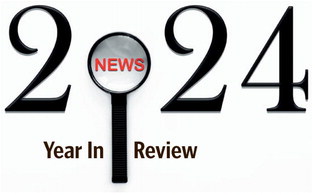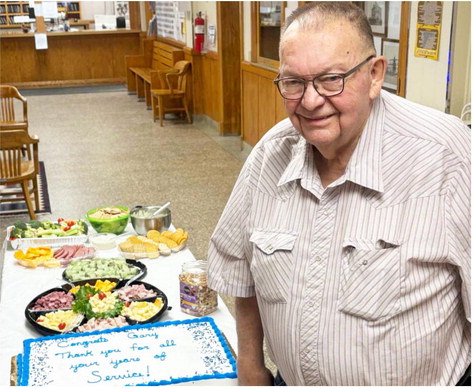Rural Hospitals, Beyond The Rhetoric
Protecting rural hospitals was a mainstay of campaign messaging in 2020. But what specific challenges has Montana’s frontier health community faced, how have they kept the lights on, and what could legislators do to help — or hurt — in 2021?
Montana Free Press
In the early months of 2020, Northern Rockies Medical Center CEO Cherie Taylor believed her facility was finally pulling out of a tight financial spot. NRMC had reeled from an $800,000 shortfall in 2018 — a considerable amount for a hospital whose gross annual revenue is roughly $10 million — and Taylor’s team was facing some tough choices. They removed obstetrics from NRMC’s suite of services. Leadership and union employees alike made financial concessions. But for residents in Cut Bank, on the Blackfeet Reservation, and along a decent chunk of the Hi-Line, the lights at the local 20-bed hospital stayed on.
Then, in mid-March, COVID-19 hit. Outpatient procedures were halted, the clinic was closed, physical and occupational therapy offices were shuttered. Taylor and her chief financial officer again found themselves discussing the possibility of delaying their own paychecks. Relief came quickly enough, in the form of Medicaid payments, assistance from state bed tax revenue and the federal CARES Act, which, according to a May 1 announcement from Sen. Jon Tester, secured nearly $200 million for Montana hospitals and care centers and expanded the Paycheck Protection Program to cover hospital staff. Still, Taylor said, the decline in patient volume in the early days of the pandemic “was a bit of wind out of our sails.”
“When I went into it, I had about three to four days of cash reserves on hand,” Taylor added. “So that was pretty hard.”
The financial knife-edge NRMC has had to walk in the past couple of years speaks to a constant refrain Montana voters heard throughout the 2020 election cycle. Candidates up and down the ballot made sweeping statements about the need to protect Montana’s rural hospitals, or used the threat of hospital closures as a cudgel against opponents. Much of the messaging delivered in television ads, mailers and stump speeches offered only a glancing look, at best, at the role these facilities play in the state and the ever-changing challenges they face.
For Taylor, the challenges of 2020 didn’t end with the arrival of relief funds. Glacier County officials had already announced in February that the county could no longer afford to operate its emergency medical service, and in June, Taylor said, the county commission requested that NRMC take the EMS reins within two weeks.
“It wasn’t that I was in the … financial position to really take that on, but our community absolutely needed it, especially because of COVID,” Taylor said, noting that ground transport is critical for COVID-19 patients needing advanced care at larger hospitals like Benefis in Great Falls. “So Oct. 1, our hospital took over operation of EMS and has been trying to build that service. At one point a couple years ago, they had like 12 paramedics or EMTs. They were down to one, and we have been trying to build that back up.”
NRMC is one of 49 rural care facilities in the state federally designated as critical access hospitals. That particular designation, said Montana Hospital Association President and CEO Rich Rasmussen, traces its origin to a Montana-based pilot demonstration in the late 1990s. Former U.S. Sen. Max Baucus shepherded the idea in Congress, creating a nationwide program that allows rural hospitals to recoup their fixed costs for treating Medicare patients. Considering that Medicare populations in states like Montana are heavily concentrated in rural areas, and that roughly half of Montana’s critical access hospitals pull in less than $10 million in net patient revenue annually, Rasmussen views the critical access law as one of the major policy initiatives of the past few decades responsible for keeping Montana’s health care safety net whole.
“Your local Home Depot generates more revenue than our critical access hospitals individually,” Rasmussen said.
That NRMC stepped up to salvage a county-run ambulance service on the verge of closure is an almost poetic twist considering that, only two decades ago, the hospital itself was in a similarly precarious situation. Glacier County owned and operated the facility until 2001, when financial pressure forced officials to consider closing it down. Community members and hospital staff intervened, forming the nonprofit that took over services and attained a measure of sustainability prior to the 2018 losses that put the hospital on uneven footing once again.
Twenty-four miles down the road in Shelby, a similar story developed last year at the 25-bed Marias Medical Center. Last fall, commissioners in Toole County proposed selling the facility, which then-CEO William Kiefer stated at the time was losing more $500,000 a year. The discussion triggered considerable local controversy, but in June, the county commission accepted a bid from Kalispell Regional Healthcare to take over operations under a new nonprofit, Newco, and to keep all employees on staff provided they met KRH standards. Current interim CEO Ward Van Wichen said the deal is presently being lawyered, with a projected ownership- transition date of late March 2021.
“It’s definitely a fluid situation,” he said of the change of ownership. “The world changes and health care changes, so as that happens we still have to take care of patients and our people, too. It’s definitely a challenge, but we’re working our way through it.”
Meanwhile, Van Wichen added, KRH has helped Marias Medical Center shoulder its COVID-19 response, sharing people, equipment and resources in a way he believes has deepened the relationship between the two. That pandemic-amplified interplay between rural hospitals and larger facilities in cities such as Kalispell and Great Falls is happening across the state, underscoring another critical role that hospitals like Marias play in Montana’s health care system.
For example, Kelley Evans, CEO of Red Lodge’s Beartooth Billings Clinic, said her facility has utilized its swing beds — a federal designation allowing certain rural hospitals to offer as-needed acute care — to relieve Billings Clinic when it has reached maximum occupancy due to COVID-19 by transferring local patients back to Red Lodge for recovery.
When Evans first arrived at Beartooth Billings, the hospital was still operating in a facility constructed in the late 1940s. Beginning in 2004, she and other hospital leaders began a campaign to replace that aging infrastructure, an undertaking that took five years to complete. Capital for critical access hospitals both in Montana and nationally is “appallingly lacking,” Evans said, and it was only with the aid of a board of directors comprising local business leaders that she was able to make a strong case to lenders. Before the replacement project, Evans estimated the clinic was earning $7 million in annual patient revenue. With a new facility and new business plan, that figure is now close to $24 million.
Still, Evans said, the evolution came with some hard decisions, the kind that don’t resonate well in rural communities.
“We had to let go of OB [obstetrics]. We could not afford to deliver the amount of babies that we would have in Carbon County,” she said. “And the other thing we needed to decide to do was step away from long-term care as a residential facility.”
Despite those choices, Red Lodge Chamber of Commerce Executive Director Sherry Weamer said Beartooth Billings Clinic has continued to play a vital role in the local community. Hospital fundraisers such as the annual Beartooth Ball at Rock Creek Lodge have become popular events, and one of the most frequently asked questions Weamer hears from visitors traveling through to Yellowstone National Park is, “Do you have a good hospital?” Weamer can’t imagine how the nearby Red Lodge Ski Area could function without Beartooth Billings so close.
“It’s important to people,” she said. “They feel safe when they’re close to services that the hospital offers. If everybody had to drive over an hour to get to Billings, that’s a precarious situation with someone’s health.”
The importance of rural hospitals to local residents has been well documented by the Montana Office of Rural Health and Area Health Education Center, a Montana State University program that regularly conducts community health needs assessments for health care facilities throughout the state. Of the 103 Carbon County respondents to the office’s 2019 assessment for Beartooth Billings, 54 stated that one of their primary reasons for seeking care there was prior experience with the hospital. That Beartooth Billings was the closest facility to their home ranked second, and the hospital’s reputation for quality came in third.
Evans describes critical access hospitals as “anchor facilities,” and that description applies to more than just the health care services they make available. Anchor facilities also offer prime training grounds for new health care professionals by tapping into state job initiatives such as Montana’s Rural Physician Incentive Program, which allocates state funds to repay education-related debt for physicians practicing in medically underserved areas. And according to a 2019 report from the Bureau of Business and Economic Research at the University of Montana, Montana hospitals account for nearly 7% of the state’s private sector employment. Non-governmental hospitals (excluding county- and state-owned and VA hospitals) generated $1.5 billion in payroll in 2017 alone. The same report states that every dollar of hospital income received by Montana households generated an additional $0.61 economy-wide.
“In some of our communities, rural hospitals are some of the larger employers in the community,” said Tim Burton, executive director of the Montana League of Cities and Towns. “And not only is it important in terms of the number, but these are well-paying jobs that provide critical services to those communities. It’s a challenge all over America, with Amazon and people purchasing online versus going down to Main Street and buying your clothes. So stability to the economy on a town-by-town basis with rural hospitals is just a fundamental and critically important part of the economy.”
The challenges facing these hospitals aren’t confined to the financial sphere. Van Wichen, who moved to Marias from his previous post as CEO at Phillips County Hospital in Malta, said attracting an adequate workforce remains the biggest difficulty — a point echoed by Montana Office of Rural Health Director Kristin Juliar. That obstacle, Juliar said, has led to many rural hospitals helping their existing staff enhance their credentials and advance professionally.
“It’s hard to recruit people to small rural facilities — physicians, nurses, all kinds of health care professionals,” Juliar said. “So you have to really focus on how you staff your facilities, how do you grow your own health care professionals, just making sure that you have the workforce you need to provide the services that people need in your community.”
But challenge breeds innovation, as NRMC’s takeover of Glacier County EMS and Beartooth Billings’ work to shoulder extra COVID-19 strain illustrate. The pandemic has thrown many of these hospitals a curveball, undermining what limited financial stability they had and at times stretching their capacities. It has also, as Van Wichen, Evans and others note, brought the diverse elements of Montana’s health care system closer together, and pushed rural hospitals into a stronger position on one important front: telehealth.
“I think one of the positives that’s come out of [the pandemic] is changes in telehealth, and how rural facilities can participate more fully in telehealth as originating telehealth services, not just being the receptor of telehealth, so that ranchers who need to get telehealth primary care now, that’s a much more possible thing,” Juliar said.
More work remains to strengthen rural hospitals’ role in the future of remote health care. Taylor pointed out that critical access hospitals still aren’t financially reimbursed for telehealth in a way that makes the services viable in the long-term.
It’s on such specific challenges that election season’s political promises come into play. Policy changes have helped rural hospitals keep the lights on over the years, Rasmussen said, from the critical access designation to a supplemental payment program secured by former Gov. Judy Martz that enhanced Medicare reimbursements for rural facilities. Medicaid expansion was another critical move toward reducing the uncompensated care that can make or break a rural hospital. According to 2017 figures from the Montana Budget and Policy Center, 48% of expansion enrollees lived outside of the state’s seven largest urban areas.
Due in large part to these policies, not to mention the flexibility and resourcefulness of rural hospitals themselves, Montana has so far managed to dodge a problem plaguing much of the nation. Stories of rural hospital closures have become commonplace in Kansas, Alabama, Iowa and elsewhere, Rasmussen said — a trend that’s been exacerbated by COVID-19. According to data from the Cecil G. Sheps Center for Health Services Research at the University of North Carolina, 134 rural hospitals nationwide have closed since 2010 (none of them in Montana). And an October analysis by Bloomberg revealed that more than three dozen hospitals in the U.S. entered bankruptcy this year.
As 2021 brings a new U.S. Congress and a new state legislative session, hospital leaders, health care professionals and rural communities will be looking to learn what more can be done to keep rural hospital closures from happening here, and on the alert for threats that might undermine the work that’s kept them open so far. With another legislative showdown over Medicaid expansion already on the radar, the future of Montana’s rural hospitals will continue to be a focus of discussion in the coming months.
“Policies that are debated and advanced really have the opportunity to either further strengthen a hospital in a rural community, and even our urban communities,” Rasmussen said. “But it also has the opportunity to weaken our safety net.”


